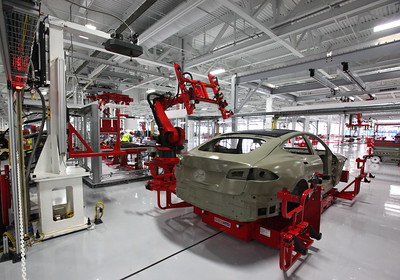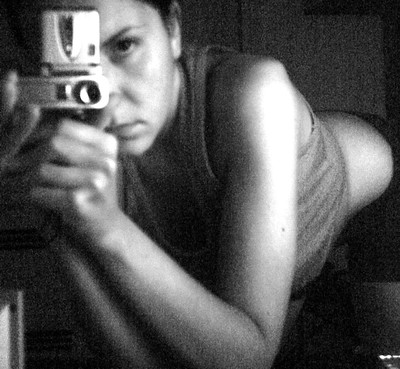Archive for the ‘Uncategorized’ Category
The Less-Than-Ideal Idealized Future State
 The Idealized Future State (IFS) is all the rage these days. The idea behind it is the team defines the IFS so it can then define the steps needed to achieve it. The IFS is just what it says it is – a description of the perfect state of our future affairs. It defines what things will look like and how things will go when the system evolves in the best imaginable way. It describes a future perfection. Some troubling questions should come to mind. Here are some.
The Idealized Future State (IFS) is all the rage these days. The idea behind it is the team defines the IFS so it can then define the steps needed to achieve it. The IFS is just what it says it is – a description of the perfect state of our future affairs. It defines what things will look like and how things will go when the system evolves in the best imaginable way. It describes a future perfection. Some troubling questions should come to mind. Here are some.
How is “best” defined? What if there is disagreement on multiple bests? Whose best becomes bestest? Once the best best is chosen, can’t it be bested by a better best?
If there were two IFSs at a social event, what would you ask them to figure out which one was an almost-IFS and which was the ideal-IFS? And if both were imposter-IFSs, how could you tell?
Since the IFS is supposed to predict the future and we can’t predict the future, why do we think it’s a good idea to ask people to predict the future?
If it takes imagination to create an IFS and imagination is not bound by reality, isn’t it likely that an imagined idealized future is not possible to achieve? And won’t a project that must achieve an impossible future likely to run long and miss its launch window?
Wouldn’t an Achievable Future State (AFS) be a little less bad? But who gets to choose what is achievable and what is not? And how could they know?
Instead of fixating on an IFS as the ultimate destination, why not agree on the situation as it is and locate yourself within that context? Why not start the journey with a sense of direction?*
Why not understand the situation as it is and do the next right thing?*
Why not run small experiments in parallel and do more of what works and less of what doesn’t?*
*Thanks to Dave Snowden for this language.
Actions That Help People Grow
 As leaders of people, we have a responsibility to help people grow. One of the best ways to help them grow is to put them in a position to do so. But what does that look like?
As leaders of people, we have a responsibility to help people grow. One of the best ways to help them grow is to put them in a position to do so. But what does that look like?
Here’s a process and some questions to help you quantify your efforts to help people grow.
Choose one person on your team and ask yourself – over the last six months how many times you took these actions:
Ask them to work with someone who works on another team.
Create conditions for them to work with someone two levels above them in the organization.
Ask them to meet with your boss one-on-one without you.
Ask them to present their work at your weekly staff meeting.
Ask them to create the agenda for your weekly team meeting.
Ask them to learn about a new topic and present their learning to a group of their peers.
Ask them to present something to a big customer.
Ask them to do work they’d never done before.
Ask them to mentor a less experienced coworker.
Ask them to rough out their personal development plan.
Ask them to come up with a discretionary project that is important to them.
Ask them to use their judgment.
Tell them they did good work.
Tell them you liked their idea.
Give them credit in front of their peers.
Give them credit to your boss in front of their peers.
Ask them to make a decision and tell them you’d support whatever they decide.
Now you have a quantified baseline of the actions you’ve taken to help that person grow. With that data in hand, meet with the person and share what you’ve done together over the last six months. Then, agree on the next installment. Choose two or three areas where you’d more action over the next six months and come up with a jointly-owned action plan to make it so.
Repeat the process for the other members of your team.
It’s powerful to show people the actions you took to help them grow. And it’s even more powerful to work with them to co-create the go-forward action plan to help them on their journey.
This list of actions isn’t the definitive list, rather it gives you some examples to help you on your way. Use the ones that work and leave the rest. And come up with some better ones. I believe in you.
Image credit — Irene Steeves
Seeing Things as They Are – The Key to Improvement
 There are many tools to improve processes. The difficult part is not understanding the tools. The difficult part is choosing which tool to use. And to do that, you’ve got to understand the process as it is and let that inform which tool to use first. You’d think it an easy thing to understand an existing process that your company has been using for a long time, but it’s not. First, it’s difficult to get the group to agree on the format to use to define the process, then it’s difficult to get agreement on the steps of the formal process, and then it’s almost impossible to characterize the if-thens of the branching process steps and the informal elements known only by the people who do the work.
There are many tools to improve processes. The difficult part is not understanding the tools. The difficult part is choosing which tool to use. And to do that, you’ve got to understand the process as it is and let that inform which tool to use first. You’d think it an easy thing to understand an existing process that your company has been using for a long time, but it’s not. First, it’s difficult to get the group to agree on the format to use to define the process, then it’s difficult to get agreement on the steps of the formal process, and then it’s almost impossible to characterize the if-thens of the branching process steps and the informal elements known only by the people who do the work.
Here’s a rule: If you don’t agree on the process as it is, you can’t improve it.
Here’s another rule: Process improvement is 90% definition and 10% improvement.
There are many processes to improve systems. Understanding how to follow the processes is not the difficult part. In my opinion, the most difficult part is choosing which process to use first. And, in my opinion, the secret to choosing the right process is to understand the system as it is. Systems can be large with many elements and can have many possible improvement trajectories. And if people are part of the system, it’s likely a complex system that can be understood only by probing the system. That means running small experiments in parallel and observing how the system responds.
Here’s a rule: It’s difficult to understand large systems where people and their judgment are involved.
And another rule: Probing systems like these can be an effective way to see their propensities.
Before there can be improvement, there must be a common understanding of how things are. And before that, there must be a desire to develop that common understanding.
Image credit – Andy
Appreciating What We Have
 We have growth targets, stretch goals, corporate initiatives, and improvement plans. If we achieve all this but it comes at the expense of our health, what do we really have?
We have growth targets, stretch goals, corporate initiatives, and improvement plans. If we achieve all this but it comes at the expense of our health, what do we really have?
When we have our health, we can forget we have it and take it for granted. We forget we can easily get into our car and drive ourselves to work and remember to complain about traffic. We forget that some cannot walk from the car to the office but that it is easy for us. We forget that not everyone can muster the energy to work a full day but take for granted that we can do it day in and day out.
The most effective way to remember our health is important is to lose it. But losing it for real is no way to go. So how can we lose it temporarily and in an easily reversible way? Here’s one way to give it a go.
Buy two wooden yardsticks (1-meter measuring sticks) to use as leg splints and some heavy adhesive tape. Measure your inseam, subtract 4 inches (100mm), and cut the pieces of wood to length. Place the splints on the inside and outside of your leg and tape them in place. The objective is to prevent your knee from bending, so place them accordingly, and don’t be shy with the tape.
With your straight leg, walk to different rooms in your house. Walk up and down stairs. Walk down the street or around the block. Walk to your car and try to get in. If you can get in, try to put your foot on the gas pedal and brake to show yourself how difficult it would be to drive. Try to ride a bicycle.
With the wooden splints still on your leg, go back in the house and spend two hours doing the things you’d normally do – cooking, cleaning, laundry, eating. After two hours, take off the splints and reflect on the experience. Ask yourself how you feel about your ability to walk now that you experienced an inability to walk. Then think about it more abstractly. Think of your straight leg as a surrogate for the loss of your health. What would it mean to lose your health? How do you feel about that?
I hope this little experiment can help you appreciate what you have. It helped me.
Image credit — toastal
When the territory is new, what do you do?
 When you remove an obstacle, the path forward becomes easier. But if there are multiple paths, which obstacle should be removed and which should remain in place?
When you remove an obstacle, the path forward becomes easier. But if there are multiple paths, which obstacle should be removed and which should remain in place?
If you can’t easily remove an obstacle that blocks the path, don’t. Look for other paths.
If all the paths point away from your intended direction, obstacles or not, look for another path.
If all paths point uphill, the first one to try is one with the most gradual slope.
If there are three paths that make sense, break up into three small groups and try them all. Decide how long to hike and gather the provisions. Each day, observe the lay of the land each day, write down what you see, and decide where to walk next. When it’s time, return to base camp and tell them what you learned.
When the territory is new, there are no maps, unless you make them. Use your judgment and make your own maps. There’s no other way.
When the territory is new, there are no leading indicators of success. But if you are asked for leading indicators, any will do, so make them up and then follow your judgment.
When the territory is new, the old rules may not apply. Keep that in mind and tread carefully.
When the territory is new, there will be skinned knees, twisted ankles, and incredible vistas.
There’s no other way.
image credit — Ed Coyle
Say no so you can say yes to the customer.
 It’s easy to say yes to a project, and it’s difficult to say no.
It’s easy to say yes to a project, and it’s difficult to say no.
When I say no to a great project, it preserves the opportunity to say yes to a magical one.
When in doubt, I say no to a project.
When I say no to a project, people notice.
When I say no to a project, I can give you a good reason. And that reason shapes the selection of the next candidate projects.
When I say no to a project, but I can’t give you a good reason, I’m not doing my job.
When I say no to a project, it’s usually because there’s nothing in it for the customer.
When a project solves a problem for the company, it brings no top-line growth. Just say no.
If the company benefits from the project, that benefit comes at the expense of the customer. Just say no.
If the customer doesn’t benefit, I say no to the project.
When I say no to a project, people know it’s because I care about the customer.
If there’s disagreement around how the customer will benefit, it’s because the customer benefit is insignificant. I say no and choose a project where the customer benefit is massive.
If you want to judge me, judge me on the projects I say no to.
What’s missing?
 If there’s no problem, there can be no solution.
If there’s no problem, there can be no solution.
If there’s no dissatisfaction, there can be no change.
If there’s no caring, there can be no disagreement, though there can be arguments.
If there is a wanting for things to be different, there can be no happiness, though there will be suffering.
If there’s no room for objection, there’s no contract for meeting objectives.
If there’s a truth untold, there can be no closeness.
If there’s no self-love, there can be no perseverance.
If there is no uncertainty, there can be no learning.
If there is no humility, there can be no change.
If there’s no tolerance for unpredictability, there can be no novelty.
If there’s no inefficiency, there is no adaptability.
If there’s no slack, there’s no room for creativity.
If there’s no room for judgment, there is no trust.
If there’s no trust, there’s no future.
Elevating the Importance of Manufacturing and Construction
 Restaurants aren’t open as much as they used to be because they cannot hire enough people to do the work. Simply put, there are too few people who want to take the orders; cook the food; deliver food to the tables; clear the tables; and wash the dishes. Sure, it’s an inconvenience that we can’t get a table, but because there are other ways to get food no one will starve because restaurants open. And while some restaurants will go out of business, this situation doesn’t fundamentally constrain the economy.
Restaurants aren’t open as much as they used to be because they cannot hire enough people to do the work. Simply put, there are too few people who want to take the orders; cook the food; deliver food to the tables; clear the tables; and wash the dishes. Sure, it’s an inconvenience that we can’t get a table, but because there are other ways to get food no one will starve because restaurants open. And while some restaurants will go out of business, this situation doesn’t fundamentally constrain the economy.
And the situation is similar with manufacturing and construction: no one wants those jobs either. But, that’s where the similarities end. The shortfall of people who want to work in manufacturing and construction will constrain the economy and prevent the renewal of our infrastructure. Gone are the days of relying on other countries to make all your products because we now know it’s not the most cost-effective way to go. But if there is no one willing to make the products, there will be no products made. And if there is no one willing to build the roads and bridges, roads and bridges will suffer. And if there are no products, no good roads, and no safe bridges, there can be no strong economy.
While there is disagreement around why people don’t want to work in manufacturing and construction, I will propose three for your consideration.
Firstly, the manufacturing and construction sectors have an image problem. People don’t see these jobs as high-tech, high-status jobs where the working environment is clean and safe. In short, people don’t see these jobs as jobs they can be proud and they don’t think others will think highly of them if they say they work in manufacturing or construction. And because of the history of layoffs, people don’t see these jobs as secure and predictable and don’t see them as reliable sources of income. This may not be the case for all people, but I think it applies to a lot of people.
Secondly, the manufacturing and construction sectors don’t pay enough. People don’t see these jobs as viable mechanisms to provide a solid standard of living for themselves and their families. This is a generalization, but I think it holds true.
Thirdly, the manufacturing and construction sectors require specialized knowledge, skills, and abilities skills that are not taught in traditional high schools or colleges. And without these qualifications, people are reluctant to apply. And if they do apply and a company hires them even though they don’t have the knowledge, skills, and abilities, companies must invest in training which creates a significant cost hurdle.
So, what are we to do?
To improve their image, the manufacturing and construction trade organizations and professional societies can come together and create a coordinated education program to change what people think about their industries. And states can help by educating their citizens on the importance of manufacturing and construction to the health of the states’ economies. This will be a long road, but I think it’s time to start.
To attract new talent, the manufacturing and construction sectors must pay a higher wage. In the short term, profits may be reduced, but imagine how much profits will be reduced if there are no people to build the products or fix the bridges. And over the long term, with improved business processes and working methods, profits will grow.
To train people to work in manufacturing and construction, we can reinstitute the Training Within Industry program of the 1940s. The Manufacturing Extension Partnership programs within the states can be a center of mass for this work along with the Construction Industry Institute and other construction trade organizations.
It’s time to join forces to make this happen.
Innovation In Reverse
 Innovation is a result of accumulated knowledge acquired over decades that is made manifest with mundane means.
Innovation is a result of accumulated knowledge acquired over decades that is made manifest with mundane means.
It can be helpful to understand the required mindset by working things backward.
If you want innovation, solve new problems.
If you want to solve new problems, wall off design space responsible for success.
Block the team from reusing the same old recipe for success so there will be discomfort.
Without discomfort, there can be no innovation. Seek it out.
Prohibit solutions that live in familiar design space to demand the product or service do new things.
When the product or service must do new things, new lines of customer goodness must be created.
To create new lines of customer goodness, you’ve got to look at new facets of the customers’ lives.
To look at new facets of the customers’ lives, look more broadly at the jobs customers want to do.
You can ask customers what new jobs they want to do, but they won’t be able to tell you.
When you want to understand which new jobs will change the game, watch the work.
When you watch the work, watch more than the work. Watch everything.
When you come back to the office with new jobs that will disrupt the industry, you will be misunderstood for at least a year.
Misunderstanding is a precursor to innovation. Seek it out.
Misunderstanding blocks support for new work, but at least you’ll know you’re on to something.
When you get no support for the new work, do it anyway.
Rinse and repeat, as needed.
“Backwards Spinner” by darkday. is licensed under CC BY 2.0
Your truth will set you free, but only if you tell it.
Even if unpopular, tell your truth.
Especially if unpopular, tell your truth.
It’s not your obligation to convince others of your truth, but it is your obligation to share it.
Your truth is yours, and that’s enough. Tell it.
If someone doesn’t share your truth, you’ve done your part.
Your truth is birthed from your experiences, and that’s why your truth is unique and valid.
Your truth can be sharpened by listening to others’ truths, but you’ve got to listen.
If you don’t listen to others’ truths, yours will stagnate.
Stagnant truth is outdated truth.
Outdated truth is less useful than updated truth.
“the eyes of truth r always watching u” by TheAlieness GiselaGiardino²³ is licensed under CC BY-SA 2.0
Can you spot a good leader?
 When the team can get things done without the leader, that’s the sign of a good leader.
When the team can get things done without the leader, that’s the sign of a good leader.
If the organization bypasses the leader and goes directly to the subject matter experts, that’s because the leader trusts the subject matter experts.
When subject matter experts are trusted, they do amazing work. Good leaders know that.
When a team leader tells you they made a mistake and take full responsibility for it, they make it safe for you to do the same.
When the team can write a good monthly report while the team leader is on vacation, that’s good for the company and the people who can write a good report on their own.
Good leaders know that they make mistakes and know you will too. And, they’re okay with all that.
When a leader won’t tell you what to do, it’s because she believes in you and knows you’re the best person to figure it out.
When a leader says “I don’t know.” they make it safe for team members to do the same.
When a team leader defers to you, that leader knows the limits of their knowledge and yours.
When a leader responds to your question with a question, the leader is helping you answer your question so you can answer it next time on your own.
Good leaders know that sometimes good people don’t know the answer. And they’re okay with that.
When a leader is comfortable with you reaching out to their boss without their knowledge it’s because that leader has told you the truth over the last several years.
Good leaders don’t celebrate failure, they celebrate learning.
When a leader asks you to use your best judgment, that’s a compliment.
When leaders show their emotions in front of you, it demonstrates that they trust you.
Judge a leader by the performance of people on their team.
“020 Row of Bhikkhunis” by Anandajoti is licensed under CC BY 2.0

 Mike Shipulski
Mike Shipulski